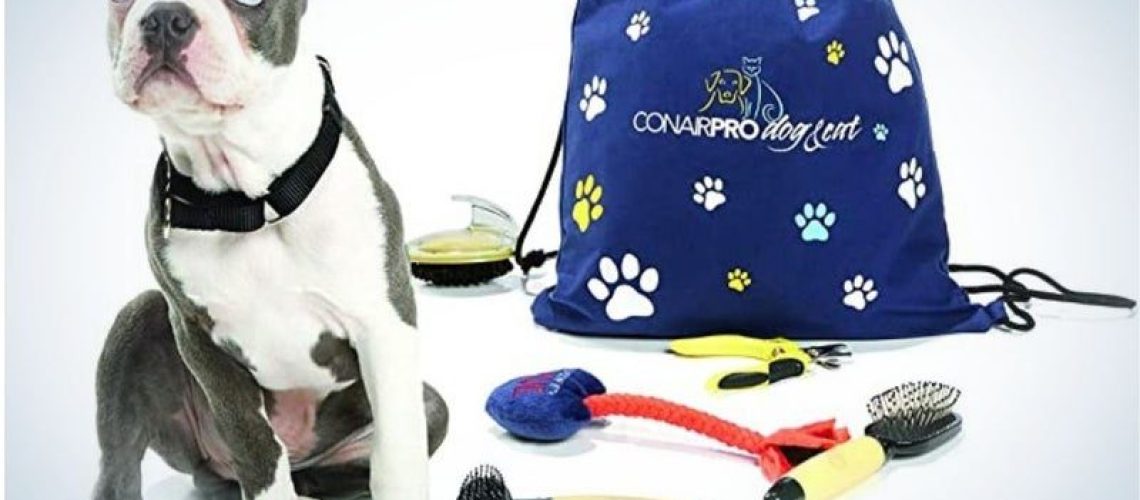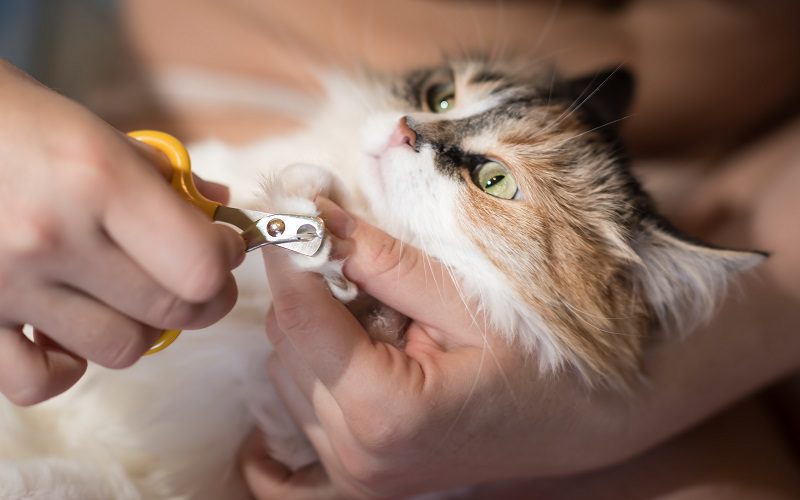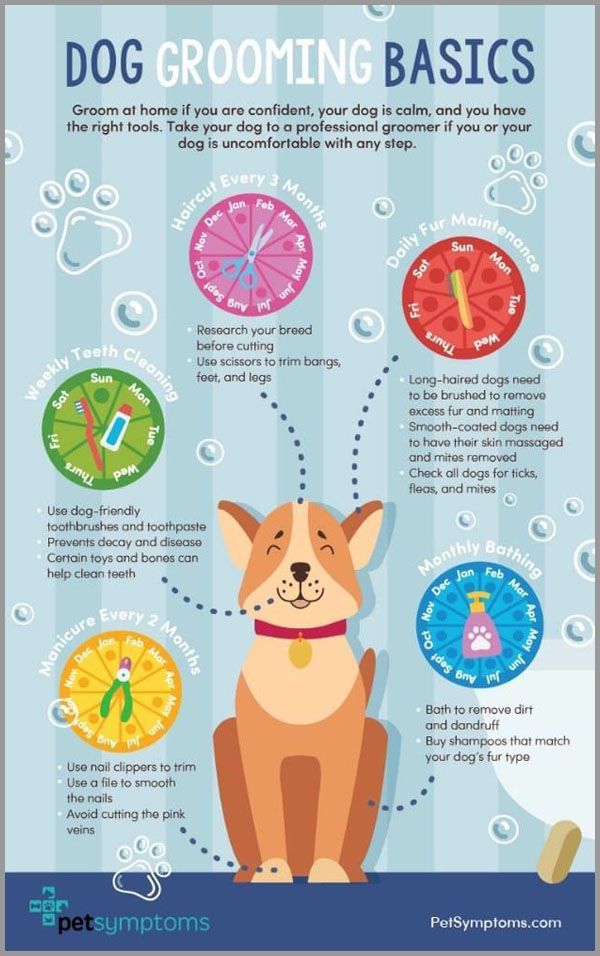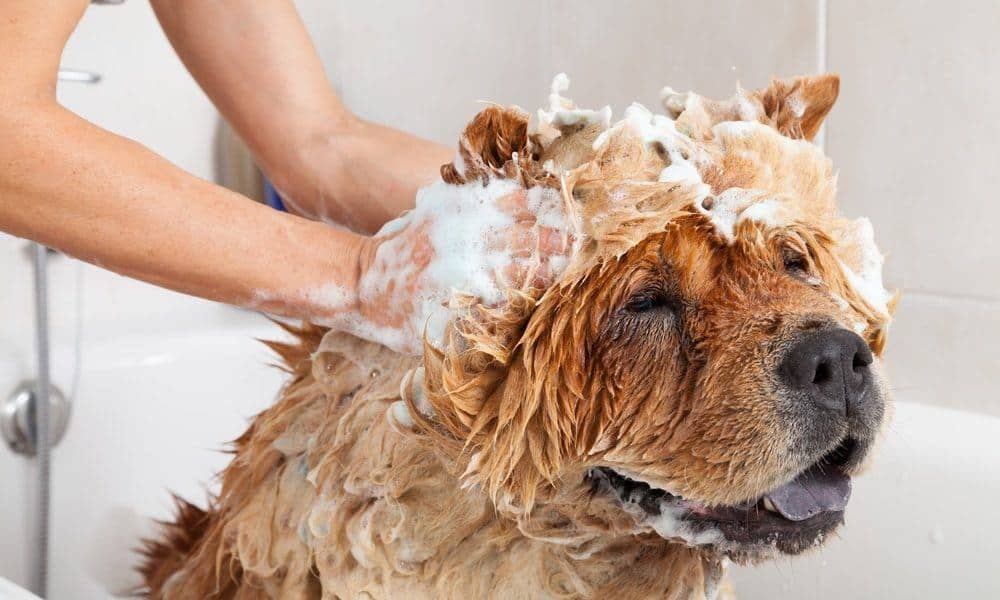If you're looking to keep your furry friend looking their best, we've got you covered. Discover the top five supplies every dog owner needs for basic grooming.
Key Takeaways:
- Regular grooming is important for maintaining a dog's overall health and hygiene.
- A good quality brush is essential for removing loose hair, preventing matting, and keeping the coat looking neat.
- Nail clippers or a grinder are necessary tools to keep a dog's nails at a safe and comfortable length.
- A gentle shampoo formulated specifically for dogs is needed to maintain their skin health and cleanliness.
- Ear cleaning solution and cotton balls should be used regularly to prevent ear infections and keep the ears clean.
Top Five Supplies Needed for Basic Dog Grooming
Grooming your dog is an important part of keeping them healthy and happy. To get started, you will need a few basic supplies. Here are the top five supplies you should have:
1. Dog Brush
A good dog brush is essential for keeping your dog's fur clean and tangle-free. There are different types of brushes available, such as slicker brushes for removing mats and tangles, bristle brushes for general grooming, and shedding brushes for reducing loose hair.
2. Dog Shampoo
Dogs need to be bathed regularly to keep their skin and coat clean. It's important to use a shampoo specifically made for dogs, as human shampoos can be too harsh for their sensitive skin. Look for a mild, hypoallergenic shampoo that won't irritate your dog's skin.
3. Nail Clippers
Trimming your dog's nails is an essential part of grooming. Long nails can be uncomfortable for your dog and may cause problems with walking or running. Use nail clippers designed specifically for dogs to avoid injuring their sensitive nail beds.
4. Ear Cleaner
Cleaning your dog's ears regularly helps prevent infections and keeps their ears healthy. Look for an ear cleaner that is gentle yet effective in removing dirt and wax buildup.
5. Toothbrush and Toothpaste
Dental care is often overlooked but plays a crucial role in your dog's overall health. Brushing your dog's teeth regularly helps prevent dental diseases such as gum inflammation and tooth decay. Use a toothbrush and toothpaste made specifically for dogs, as human toothpaste can be toxic to them.
With these basic supplies, you'll be well-equipped to start grooming your dog at home. Remember to be gentle and patient with your furry friend, and make the grooming experience a positive one for both of you.
The Importance of Regular Dog Grooming
Grooming is not just about making your dog look good; it also has many health benefits. Regular grooming helps keep your dog's skin and coat healthy, prevents matting and tangles, reduces shedding, and allows you to spot any potential health issues early on. Here are some reasons why regular dog grooming is important:
1. Skin and Coat Health
Grooming helps remove dirt, dead hair, and dandruff from your dog's coat, allowing their skin to breathe. It also stimulates blood flow to the skin, promoting a healthier coat. Regular brushing distributes natural oils throughout the fur, keeping it shiny and reducing the risk of dryness or irritation.
2. Preventing Matting and Tangles
If your dog has long or thick fur, it's prone to matting and tangling. These can be painful for your dog and may even lead to skin infections if left untreated. Regular brushing helps prevent mats by removing loose hair and preventing it from getting tangled.
3. Shedding Control
All dogs shed to some extent, but regular grooming can help reduce excessive shedding. Brushing removes loose hair before it ends up all over your furniture and clothes.
4. Early Detection of Health Issues
Grooming gives you an opportunity to examine your dog's body closely. By regularly checking their skin, ears, eyes, teeth, nails, and other areas during grooming sessions, you can spot any abnormalities or signs of illness early on. This allows you to seek veterinary care promptly and prevent any potential health problems from worsening.
Regular grooming not only keeps your dog looking their best but also contributes to their overall well-being. It's a bonding experience that helps you establish trust with your dog and ensures they stay healthy and comfortable.
How Often to Brush Your Dog's Fur and Best Brush Types
Brushing your dog's fur is an essential part of their grooming routine. The frequency of brushing depends on the type of coat your dog has. Here are some general guidelines:
Short-haired Dogs
If your dog has short hair, such as a Boxer or Dalmatian, they will need to be brushed once a week. Use a bristle brush or rubber curry brush to remove loose hair and keep their coat shiny.
Medium-haired Dogs
Dogs with medium-length hair, like Golden Retrievers or Cocker Spaniels, should be brushed two to three times a week. A slicker brush is ideal for removing tangles and mats in their fur.
Long-haired Dogs
Long-haired breeds such as Shih Tzus or Maltese require daily brushing to prevent matting and tangling. Use a slicker brush followed by a comb to remove any knots gently.
Double-coated Dogs
Breeds like German Shepherds or Huskies have double coats that shed heavily during certain seasons. They should be brushed at least once a week using an undercoat rake or deshedding tool to reduce shedding.
Remember to be gentle while brushing, especially if your dog has sensitive skin. Regular brushing not only keeps your dog's coat healthy but also strengthens the bond between you and your furry friend.
Choosing the Right Shampoo and Frequency of Dog Bathing
Bathing your dog is an essential part of their grooming routine. However, it's important to choose the right shampoo and bathe them at the appropriate frequency to avoid skin irritation or dryness. Here are some tips:
Choosing the Right Shampoo
When selecting a shampoo for your dog, opt for one specifically formulated for dogs rather than using human shampoo. Human shampoos can be too harsh for their sensitive skin and may cause allergic reactions or dryness. Look for a mild, hypoallergenic shampoo that suits your dog's specific needs, such as an oatmeal-based shampoo for sensitive skin or a flea and tick shampoo if necessary.
Frequency of Dog Bathing
The frequency of bathing depends on several factors, including your dog's breed, lifestyle, and coat type. In general, most dogs should be bathed every 4-6 weeks. However, certain breeds with oily coats or skin conditions may require more frequent bathing, while others with dry skin may need less frequent baths to avoid stripping natural oils from their coat.
Tips for Bathing Your Dog
- Before bathing, brush your dog's fur to remove any tangles or mats.
- Use lukewarm water and wet your dog thoroughly from head to tail.
- Gently massage the shampoo into their coat, avoiding contact with eyes and ears.
- Rinse thoroughly to ensure all shampoo is removed.
- Dry your dog with a towel or blow dryer on a low heat setting.
- Avoid bathing too frequently as it can lead to dry skin. If necessary, use a dry shampoo between baths to keep your dog clean.
By choosing the right shampoo and bathing your dog at the appropriate frequency, you can ensure they stay clean and their skin remains healthy.
Benefits of Using Dog-Specific Nail Clippers Instead of Regular Ones
Trimming your dog's nails is an essential part of their grooming routine. While it may be tempting to use regular nail clippers designed for humans, it's best to invest in nail clippers specifically made for dogs. Here are some benefits of using dog-specific nail clippers:
Safety
Dog-specific nail clippers are designed with safety in mind. They have a curved cutting edge that matches the shape of a dog's nail, reducing the risk of accidents or injury. Regular nail clippers may crush or splinter a dog's nail if not used correctly.
Comfort
Dog-specific nail clippers often have ergonomic handles that provide a comfortable grip, making it easier to control the clipping process. This ensures both you and your dog feel more at ease during the trimming session.
Precision
Dog-specific nail clippers come in different sizes and styles to accommodate various breeds and sizes of dogs. This allows for greater precision when trimming nails, ensuring you don't cut too much or too little off at once.
Tips for Trimming Your Dog's Nails
- Get your dog accustomed to having their paws touched from an early age to make nail trimming less stressful.
- Use treats or rewards during the trimming process to create positive associations.
- Take breaks if needed, especially if your dog becomes anxious or uncomfortable.
- If you're unsure about how to trim your dog's nails, consult a professional groomer or veterinarian for guidance.
By using dog-specific nail clippers and following proper trimming techniques, you can keep your dog's nails at an appropriate length and prevent discomfort or injury.
Special Tools and Supplies for Cleaning a Dog's Ears and Why It's Important
Cleaning your dog's ears is an essential part of their grooming routine. Regular ear cleaning helps prevent infections, removes dirt and wax buildup, and keeps their ears healthy. Here are some special tools and supplies you'll need:
Ear Cleaner
Choose an ear cleaner specifically formulated for dogs. Avoid using cotton swabs or other objects that can push debris further into the ear canal or cause injury.
Gauze or Cotton Balls
You'll need gauze pads or cotton balls to wipe away dirt and excess moisture after applying the ear cleaner. These are gentle on your dog's ears and help remove any remaining debris.
Tips for Cleaning Your Dog's Ears
- Gently lift your dog's ear flap to expose the ear canal.
- Pour a small amount of the ear cleaner into the canal, following the product instructions.
- Massage the base of your dog's ear for a few seconds to help loosen any dirt or wax.
- Allow your dog to shake their head, which helps dislodge debris from the ear canal.
- Use gauze pads or cotton balls to wipe away any visible dirt or excess moisture from the outer part of the ear.
- If you notice any redness, swelling, discharge, or foul odor in your dog's ears, consult a veterinarian as it may indicate an infection or other underlying issue.
Regular ear cleaning is important for maintaining your dog's ear health and preventing ear infections. However, be cautious not to over-clean their ears, as excessive cleaning can disrupt the natural balance of the ear canal.
Using a Slicker Brush to Remove Tangles and Mats from a Dog's Coat
A slicker brush is a valuable tool for removing tangles and mats from your dog's coat. It has fine, short wires close together on a flat surface. Here's how to use a slicker brush effectively:
Step 1: Prepare Your Dog
Before brushing, ensure your dog is calm and relaxed. Speak softly to them and gently stroke their fur to create a positive environment.
Step 2: Start at the Ends
Begin brushing at the ends of your dog's fur where tangles and mats are most likely to occur. Hold the hair above the mat with one hand to prevent pulling on your dog's skin while brushing with the other hand.
Step 3: Brush in Sections
Work in small sections, brushing from the ends towards the roots. Use gentle, short strokes rather than long sweeping motions. This helps prevent discomfort for your dog and allows you to tackle each tangle or mat individually.
Step 4: Be Patient
If you encounter a stubborn tangle or mat, be patient and work through it slowly. Applying a detangling spray or using your fingers to gently separate the hairs can help loosen the knot before brushing it out.
Tips for Using a Slicker Brush
- Avoid applying excessive pressure while brushing to prevent irritation or discomfort.
- Regularly clean the brush by removing any trapped hair to maintain its effectiveness.
- If your dog has sensitive skin or is prone to matting, consider using a slicker brush with softer bristles.
Regular use of a slicker brush helps keep your dog's coat tangle-free and prevents mats from forming. It also stimulates blood flow to the skin, promoting a healthy and shiny coat.
Essential Items for Brushing a Dog's Teeth and Importance of Dental Care
Dental care is an often overlooked aspect of dog grooming but is crucial for their overall health. Regular brushing removes plaque and tartar buildup, preventing dental diseases such as gum inflammation, tooth decay, and bad breath. Here are some essential items for brushing your dog's teeth:
Toothbrush
Use a toothbrush specifically designed for dogs. These brushes have soft bristles and come in different sizes to suit various breeds. Avoid using human toothbrushes as they can be too harsh for your dog's gums.
Toothpaste
Choose a toothpaste made specifically for dogs that does not contain fluoride or other harmful ingredients. Dog-friendly toothpaste comes in flavors like poultry or beef, making it more appealing to your furry friend.
Tips for Brushing Your Dog's Teeth
- Introduce your dog to toothbrushing gradually, allowing them
The Purpose of Using a Grooming Table or Elevated Surface During the Grooming Process
Improved Accessibility and Ergonomics
Using a grooming table or elevated surface during the grooming process offers several benefits. Firstly, it improves accessibility for the groomer by bringing the pet to a comfortable height. This eliminates the need for bending over or straining one's back, reducing the risk of injuries and ensuring a more efficient grooming experience. Additionally, an elevated surface allows better visibility and access to all areas of the pet's body, making it easier to thoroughly clean and groom them.
Reduced Stress for Pets
Another significant advantage of using a grooming table or elevated surface is that it helps reduce stress for pets during grooming sessions. When pets are placed on an elevated surface, they feel more secure and stable compared to being on the ground. This can help alleviate anxiety and nervousness, allowing them to relax and cooperate better throughout the grooming process. Moreover, having pets at eye level with the groomer can create a sense of trust and reassurance, further enhancing their comfort during grooming.
Using a grooming table also provides additional safety measures. Many tables come equipped with adjustable restraints or harnesses that securely hold pets in place while allowing freedom of movement for necessary grooming tasks. This ensures both the pet's safety and prevents any sudden movements that could potentially harm themselves or the groomer.
In summary, incorporating a grooming table or elevated surface into the grooming process improves accessibility, ergonomics, reduces stress for pets, enhances safety measures, and ultimately leads to a more effective and enjoyable experience for both groomers and their furry clients.
- Improved accessibility
- Better visibility
- Enhanced safety measures
- Reduced stress levels for pets
- Increased cooperation from pets
- Alleviated strain on groomers' backs
- Trust-building between pet and groomerTop Five Supplies for Basic Dog Grooming 1. Dog shampoo 2. Brush or comb 3. Nail clippers 4. Ear cleaner 5. Towels or drying mitts Keep your furry friend clean and happy with these essential grooming supplies! What are 5 basic brushes combs and other tools needed to be a groomer?
For a well-rounded selection, it is recommended to have bristle brushes that work well with various hair types, slicker brushes for detangling medium to long hair, wire pin brushes, rakes, and mat breakers. Additionally, shedding tools can be useful to minimize hair shedding, and flea combs are helpful for identifying potential flea infestations in pets.
What products do professional dog groomers use?
We have all the essential supplies for professional dog groomers! You can find everything from shears, tools, nail care, and brushes, to tables, tubs, dryers, crates, cages, grooming apparel, and cleaning supplies. PetEdge is your one-stop shop for all the products you need to keep your pet grooming business up and running!
What does basic grooming include?
Basic grooming services include activities such as removing ear hair, shaving paw pads, and trimming nails, which are essential for maintaining the physical health of your dog. Each grooming session focuses on ensuring the well-being of your dog's skin, coat, mouth, ears, and paws.
What are the five types of custom brushes?
There are five options to choose from: calligraphic, scatter, art, bristle, and pattern. Each option has its own set of customizable features and effects in the Brush Options dialogue box.
What do dog groomers use to make them smell good?
Experienced groomers utilize a scented conditioner that is safe for pets and apply it to Fifi's fur. They allow it to sit for a minute before rinsing it out. You have the option to choose which scent you prefer, as long as it is safe for pets.
Is it better to cut a dog's hair wet or dry?
Offer your dog some treats while he is being exposed to the sound of the clippers to help him understand that they are a positive thing. It is advised to wash your dog and ensure they are completely dry before attempting to clip them. If possible, avoid clipping a dog that is dirty.

















